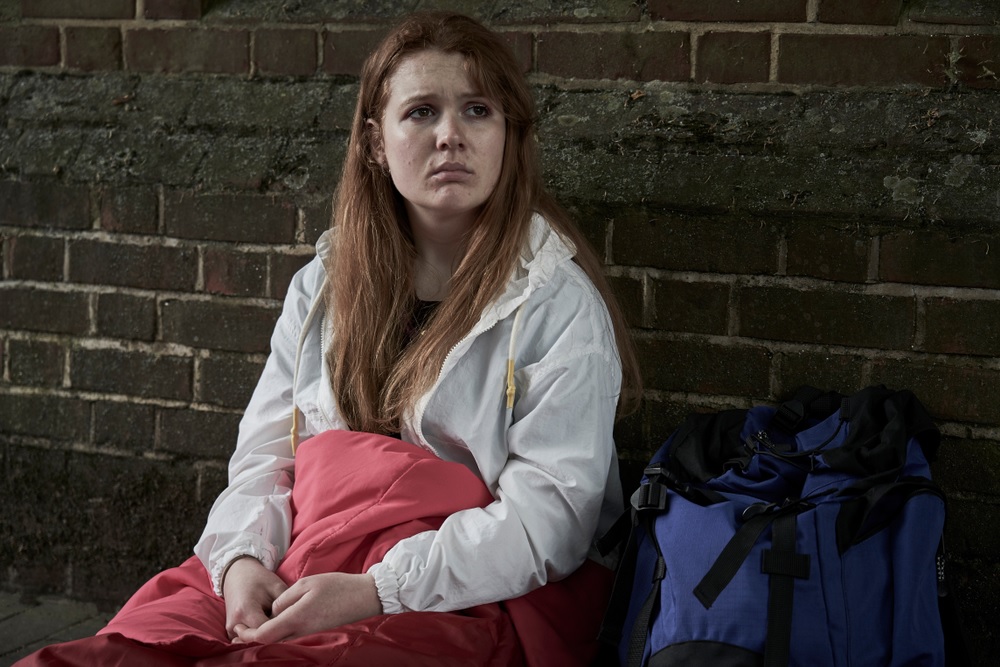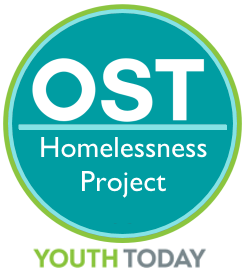 SPEEDKINGZ/SHUTTERSTOCK
SPEEDKINGZ/SHUTTERSTOCK
Series: Part 2 of 7
 Part 1: How Do We Make Youth Homelessness Effort Bipartisan?
Part 1: How Do We Make Youth Homelessness Effort Bipartisan?
Part 2: America’s Biases Marginalize Youth, Drive Them to Homelessness
Part 3: Collective Decision-making Can Neutralize Politics of Fear
Part 4: So, How Does This Collective Decision-making Work?
Part 5: Youth Homelessness Is a Symptom, Not a Cause
Part 6: To Work On Youth Homelessness, Brainstorming, Decision Analysis Strong Tools
Part 7: Youth Themselves Must Help Design Supports To Protect Them From Homelessness
Judging the person versus the situation
Social psychology has found that someone may decide someone else’s behavior has one of two causes: dispositional or situational. Dispositional attribution assigns the cause of behavior to some internal characteristic of a person — personality traits including attitudes, values and belief — rather than to outside forces.
Situational attribution assigns cause of behavior to some situation or event outside a person’s control rather than to some internal characteristic. Take, for example, those times when we feel compelled to explain a remark or conduct that offended someone. We tend to explain that our comment or act was influenced by something that happened earlier that day or what somebody else had said to deflect it from being seen as a flawed personality trait.
But this is where the two attribution causes can be difficult to assign. Is the situation sufficiently reasonable to explain the conduct or remark, or is it an attempt to mitigate the offensive character of those remarks, or both?
And one other thing plays a role in judging others: the attitudes, values and beliefs of the assignor of judgment.

Judge Steven C. Teske
All this comes down to most, if not all, of us making a fundamental attribution error when we are confronted with someone who offends us in some way or makes us feel uncomfortable. This error occurs when a person assigns the wrong cause to someone else’s remarks, behaviors or even their general appearance. They do that by assigning a personality trait to the perceived offender without further inquiry, which is often exacerbated by relying mostly on our own attitudes, values and beliefs to make the judgment.
“What’s wrong with that guy who wants a sex change? Is he mentally ill?”
No, but he has been diagnosed with gender dysphoria, which is not a mental health disorder but can result in a serious mental health disorder if he doesn’t take action to address it, which may result in various treatment modalities including gender reconstructive surgery (GRS).
Public opinion influences policy
Notwithstanding the sound medical reasons for GRS, it begs the question why it has been a struggle to get insurance coverage for treating gender dysphoria, especially if the doctor recommends GRS.
We posit that it comes down to public opinion and that in fact most policies — whether on crime and punishment, social welfare or even medical insurance — are influenced by public opinion. This brings us to the importance of the fundamental attribution error as reflected in the transgender example.
So long as the many rely on dispositional attribution to assign judgment, the many will influence policymakers to pursue a course of action that is grounded in wrongly judging a person’s personality or character traits, bias or both.
And it’s the fundamental attribution error of too many that marginalizes youth and drives them to homelessness. Furthermore, irrespective of the funding dispensed at the federal level to combat youth homelessness, our nation will not become as effective as it can be because the same reasons that drive youth to homelessness will keep us from doing better than what we are doing now.
Why? Because it’s not just about youth who are voiceless, voteless and have little to no influence in policymaking. It’s more because many of these youth in particular are homeless for reasons that too many find politically, socially and morally incomprehensible to embrace.
To be blunt, we are referring to the biased America, those Americans who judge those who look different on traits rather than on the circumstances creating their situation of homelessness.

Naomi Smoot Evans
We can’t count the number of times some of our white associates have blurted, “Blacks commit more crimes,” as if it’s their Blackness that drives them to crime with no consideration of the historically irrefutable oppressive circumstances (slavery, segregation, Jim Crow, lynching and now “I can’t breathe”) that have impoverished so many people of color and that can produce criminogenic behaviors.
The same thing is happening to many of our youth, which drives them to homelessness. Our self-righteous and so-called moral convictions can’t tolerate a young adult who confesses that their sexual or gender orientation is different from the way they look, and so they are ostracized, humiliated and sometimes physically abused at the hands of their parents and peers.
They are told they have a flawed personality trait, that there is something wrong with them, that they are a freak of nature or worthless in the eyes of God.
So, they run away to escape the pain and become homeless.
And yet, irrespective of the abuser’s so-called morals, they do the immoral and vulgar by ousting them from home and society.
It is unadulterated hypocrisy.
Should you think our opinions are subjective and likely wrong, we point you to an objective study about the sentiments of many Americans toward homelessness. It found that “highest rates for lifetime literal homelessness were found in the UK (7.7%) and United States (6.2%), with the lowest rate in Germany (2.4%), and intermediate rates in Italy (4.0%) and Belgium (3.4%).” This same study also found that “less compassionate attitudes toward the homeless were also found on many dimensions in the United States and the UK.”
Is it simply coincidental that the two nations with the least compassion for homelessness also has the highest rates for lifetime homelessness?
We seriously doubt it, and you should as well.
It’s time to do better, and to do better, we must consider an approach to this problem that removes the political and other opinionated rhetoric caused by our fundamental attribution errors from the policymaking conversations. We can’t control how the many judge and marginalize youth, but we can create systems of decision-making that includes guardrails to keep dispositional attributes and biases out of decision-making and to focus on best practices and systemic approaches to eliminating homelessness.
The collective decision-making approach
We established in the beginning that the marginalizing of homeless youth is predominately caused by the biases of many Americans and why. We cited an empirical study strongly suggesting a relationship between Americans’ lack of compassion for the homeless and our highest rate of homelessness among other countries other than the United Kingdom.
We opined that this lack of compassion is attributable to dispositional attitudes (biases) toward homeless youth — including LBGQT, justice-involved, mental health needs and poverty — as opposed to considering the underlying circumstances that led to their homelessness.
Based on these foregoing observations, we concluded that moving forward to build a stronger and more effective coalition to combat youth homelessness will not occur unless policies can be developed without the influence of these marginalizing biases.
For this to occur, there should be no doubt that it must be accomplished through a diverse collective body of stakeholders who intersect at varying levels with our youth, and specifically homeless youth. However, creating a collaborative body in and of itself is not good enough.
Why?
Because most collaborative efforts engage without rules and conditions that create the guardrails necessary for the collective to stay within the lanes to move toward a solution while warding off the political and marginal rhetoric that can hijack the collective and cause it to crash.
We recommend a specific approach called collective decision-making that’s designed to generate all possible alternatives. It employs an analytical decision-making process using probabilities to choose among the alternatives, or a combination thereof, that will produce the best outcomes. It is a four-tier approach that includes: collaboration, framing the problem and issues, generating alternatives, and deciding the course of action.
It is an ideal approach because it demands a set of rules and conditions that prohibit intended or unwitting political and emotional rhetoric that can sabotage the effort. So long as emotional, opinionated and subjective commentary is allowed in a discussion about policy and systemic formulation, the less likely it is that objective data-driven evidence that informs the collective of what works and what does not will be embraced.
This is not some theoretical suggestion never tested in real life. We can point to several instances of this approach used to accomplish meaningful criminal and juvenile justice reforms, mostly in conservative states with traditional “get tough” values on crime and punishment.
Steven Teske is the chief judge of the Juvenile Court of Clayton County, Ga., was the national chair of the Coalition For Juvenile Justice and won the 2018 leadership prize from the Juvenile Law Center. He served two terms on the Federal Advisory Committee for Juvenile Justice, is a former member of the Board of Directors of the National Council of Juvenile and Family Court Judges and has testified before Congress numerous times on juvenile justice reform.
Naomi Smoot Evans is the executive director of the Coalition For Juvenile Justice, where she oversees the organization’s efforts to help states create brighter outcomes for youth. She co-chairs the Act 4 Juvenile Justice Coalition and was instrumental in passage of the 2018 Juvenile Justice Reform Act.

























